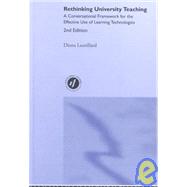
What is included with this book?
|
xi | ||||
|
xii | ||||
|
xiv | ||||
| Acknowledgements | xv | ||||
| Preface to the 2nd edition | xvi | ||||
| Introduction | 1 | (10) | |||
| Part I What students need from learning technologies | |||||
|
11 | (14) | |||
|
11 | (1) | |||
|
12 | (1) | |||
|
13 | (3) | |||
|
16 | (3) | |||
|
19 | (4) | |||
|
23 | (2) | |||
|
25 | (16) | |||
|
25 | (1) | |||
|
26 | (2) | |||
|
28 | (8) | |||
|
36 | (4) | |||
|
40 | (1) | |||
|
41 | (21) | |||
|
41 | (1) | |||
|
42 | (1) | |||
|
43 | (5) | |||
|
48 | (4) | |||
|
52 | (3) | |||
|
55 | (3) | |||
|
58 | (2) | |||
|
60 | (2) | |||
|
62 | (29) | |||
|
62 | (2) | |||
|
64 | (3) | |||
|
67 | (2) | |||
|
69 | (2) | |||
|
71 | (6) | |||
|
77 | (4) | |||
| Part II Analysing the media for learning and teaching | |||||
|
81 | (1) | |||
|
81 | (2) | |||
|
83 | (3) | |||
|
86 | (3) | |||
|
89 | (2) | |||
|
91 | (16) | |||
|
91 | (1) | |||
|
92 | (2) | |||
| 94 | (4) | ||||
|
98 | (1) | |||
|
99 | (4) | |||
|
103 | (1) | |||
|
104 | (1) | |||
|
105 | (2) | |||
|
107 | (19) | |||
|
107 | (1) | |||
|
108 | (4) | |||
|
112 | (8) | |||
|
120 | (2) | |||
|
122 | (2) | |||
|
124 | (2) | |||
|
126 | (19) | |||
|
126 | (1) | |||
|
127 | (6) | |||
|
133 | (1) | |||
|
134 | (4) | |||
|
138 | (5) | |||
|
143 | (1) | |||
|
144 | (1) | |||
|
145 | (16) | |||
|
145 | (2) | |||
|
147 | (4) | |||
|
151 | (3) | |||
|
154 | (2) | |||
|
156 | (2) | |||
|
158 | (1) | |||
|
159 | (2) | |||
|
161 | (20) | |||
|
161 | (1) | |||
|
161 | (6) | |||
|
167 | (1) | |||
|
168 | (3) | |||
|
171 | (2) | |||
|
173 | (1) | |||
|
173 | (1) | |||
|
174 | (7) | |||
| Part III The design methodology | |||||
|
181 | (18) | |||
|
181 | (1) | |||
|
182 | (1) | |||
|
183 | (5) | |||
|
188 | (4) | |||
|
192 | (2) | |||
|
194 | (1) | |||
|
195 | (2) | |||
|
197 | (2) | |||
|
199 | (15) | |||
|
199 | (1) | |||
|
200 | (10) | |||
|
210 | ||||
|
202 | (2) | |||
|
204 | (3) | |||
|
207 | (1) | |||
|
208 | (4) | |||
|
212 | (2) | |||
|
214 | (28) | |||
|
214 | (1) | |||
|
214 | (5) | |||
|
219 | (3) | |||
|
222 | (2) | |||
|
224 | (3) | |||
|
227 | (5) | |||
|
232 | (1) | |||
|
233 | (3) | |||
|
236 | (1) | |||
|
237 | (1) | |||
|
238 | (2) | |||
|
240 | (2) | |||
| Appendix 1 Extract from Plato's Meno Dialogue | 242 | (2) | |||
| Appendix 2 Subject teaching journals available on the Web | 244 | (2) | |||
| Appendix 3 Summary of activities for an effective organisational infrastructure | 246 | (3) | |||
| Glossary | 249 | (4) | |||
| References | 253 | (1) | |||
| Books and journal articles | 253 | (7) | |||
| Web references | 260 | (1) | |||
| Index | 261 |
The New copy of this book will include any supplemental materials advertised. Please check the title of the book to determine if it should include any access cards, study guides, lab manuals, CDs, etc.
The Used, Rental and eBook copies of this book are not guaranteed to include any supplemental materials. Typically, only the book itself is included. This is true even if the title states it includes any access cards, study guides, lab manuals, CDs, etc.